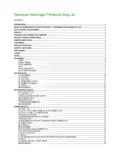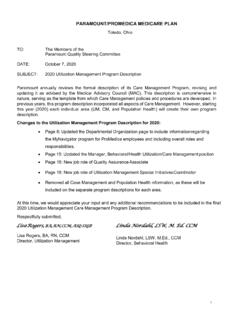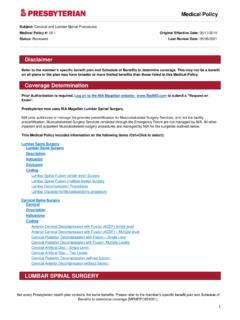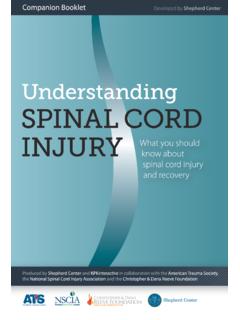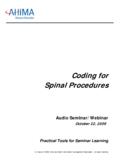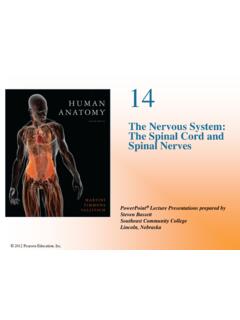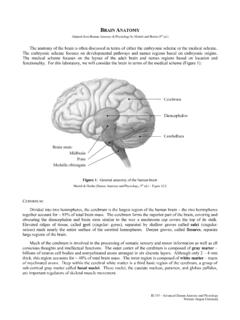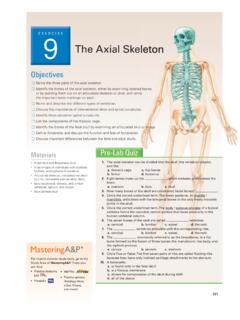Transcription of Lumbar Laminectomy, Hemi-Laminectomy, Laminotomy …
1 PG0416 12/28/2020 Lumbar laminectomy , hemi - laminectomy , Laminotomy and/or Discectomy Policy Number: PG0416 Last Review: 01/25/2018 GUIDELINES This policy does not certify benefits or authorization of benefits, which is designated by each individual policyholder contract. Paramount applies coding edits to all medical claims through coding logic software to evaluate the accuracy and adherence to accepted national standards. This guideline is solely for explaining correct procedure reporting and does not imply coverage and reimbursement. SCOPE X Professional _ Facility DESCRIPTION Back pain, with and without radicular symptoms, is one of the most common medical reasons that patients seek medical care and may affect 8 out of 10 people during their lifetime.
2 Most back pain will improve over 2 months with minimal intervention. The pain can vary from mild to disabling. Back pain is considered to be chronic if it lasts more than three months. Age-related disc degeneration, facet joint arthrosis and segmental instability are leading causes of chronic back pain. A Lumbar laminectomy is a surgical procedure which involves the removal of a portion of the bony arch, or lamina, on the dorsal surface of a vertebra. The procedure is performed to relieve pressure on the nerve roots and spinal cord. The most common reason for performing a laminectomy is to treat spinal stenosis which is a chronic narrowing of the spinal canal due to degenerative arthritis and disc degeneration.
3 If only one side is removed, it is called a hemilaminectomy. It is not uncommon for a laminectomy to be performed in combination with other surgical procedures such as discectomy (diskectomy), foraminotomy, spinal fusion or excision of an intraspinal tumor or lesion. In most cases a laminectomy is performed as an elective procedure rather than as emergency surgery. Lumbar laminectomy , hemilaminectomy, Laminotomy and discectomy are established surgical options for several conditions when symptoms persist despite noninvasive treatment (when conservative management is appropriate) or as first line treatment for certain emergencies.
4 As with all surgical procedures, Lumbar surgery is not without risk. The decision to perform Lumbar surgery involves a holistic review of the patient. Symptoms including the presence of neurological deficits, pain acuity and duration, physical examination and MRI findings, along with the impact on activities of daily living are factors that influence the decision making discussion. Patients who fail to achieve symptom or functional improvement after actively participating in a 6-12 week conservative (non-surgical) treatment program may be candidates for a Lumbar surgery. The surgeon s choice of interventional procedure(s) depends on the specific patient s symptoms and imaging findings.
5 POLICY Lumbar laminectomy , hemilaminectomy, Laminotomy , and discectomy do not require prior authorization. Appropriate ICD-10 diagnosis code (as listed below) required for coverage. COVERAGE CRITERIA HMO, PPO, Individual Marketplace, Elite/ProMedica Medicare Plan, Advantage Lumbar laminectomy , hemilaminectomy, Laminotomy , and discectomy are covered services when medically ADVANTAGE | ELITE | HMO INDIVIDUAL MARKETPLACE | PROMEDICA MEDICARE PLAN | PPO PG0416 12/28/2020 necessary as outlined below. The ICD-10 diagnosis codes that are covered for these procedures are listed below in the CODING/BILLING INFORMATION section.
6 When a diagnosis as listed below is not billed in one of the first five diagnosis fields on the claim form, the procedure will be denied. Indications Lumbar laminectomy , hemilaminectomy, Laminotomy (for unilateral symptoms), and/or discectomy is considered medically necessary when at least one of the following criteria is met: A. Conus medullaris syndrome ( spinal cord compression) confirmed by appropriate imaging studies with severe or progressive neurologic deficits consistent with spinal cord compression ( , fecal or urinary incontinence); or B. Cauda equina syndrome with neurologic deficits (bowel or bladder dysfunction, saddle anesthesia, bilateral neurologic abnormalities of the lower extremities) confirmed by physical examination and appropriate imaging studies; or C.
7 Lumbar spinal stenosis and/or foraminal stenosis confirmed by appropriate imaging studies, with either: 1. severe and progressive symptoms of pain or neurogenic claudication (buttock or leg) unresponsive to at least 6 weeks of conservative nonoperative therapy; or 2. significant motor deficit preventing ambulation; or D. Lumbar herniated intervertebral disc with nerve root compression confirmed by appropriate imaging studies and the following additional criteria are met: 1. Radicular pain with physical findings of nerve compression (for example, absent lower extremity reflex or loss of sensation in dermatomal distribution) or alternative clinical findings consistent with radiculopathy; and 2.
8 All other reasonable sources of pain have been ruled out; and 3. Findings on imaging correspond to the clinical findings and neurological examination; and 4. Symptoms are interfering with either: a. functional activities of daily living and persist despite at least 6 weeks of conservative nonoperative therapy; or b. are associated with significant or progressive motor deficits; or E. When performed with dorsal rhizotomy as a treatment for spasticity ( , cerebral palsy); or F. When performed with biopsy or excision when signs or symptoms indicative of Lumbar disease ( , pain, motor weakness) and imaging suggests tumor or metastatic neoplasm , an infectious process ( , epidural abscess) , arteriovenous malformation, malignant or non-malignant mass; or G.
9 Acute fracture causing symptomatic nerve root compression. Note: Conservative non-operative therapy consists of an appropriate combination of medication ( , Non-Steroidal Anti-Inflammatory Drugs [NSAIDs], analgesics), physical therapy, spinal manipulation therapy, epidural steroid injections, or other interventions based on the individual's specific presentation, physical findings and imaging results. Lumbar laminectomy , hemilaminectomy, Laminotomy , and discectomy are considered not medically necessary when criteria above are not met and for all other indications not listed above as medically necessary.
10 Documentation in the medical record must clearly support the medical necessity of the surgery and include the following information: Medical History Co-morbid physical and psychological health conditions History of back surgery, including minimally invasive back procedures Prior trial, failure, or contraindication to conservative medical/non-operative interventions that may include but are not limited to the following: o Activity modification for at least 6 weeks o Oral analgesics and/or anti-inflammatory medications o Physical therapy o Chiropractic manipulation PG0416 12/28/2020 o Epidural steroid injections Physical Examination Clinical findings should include the patient s stated symptoms and duration.

